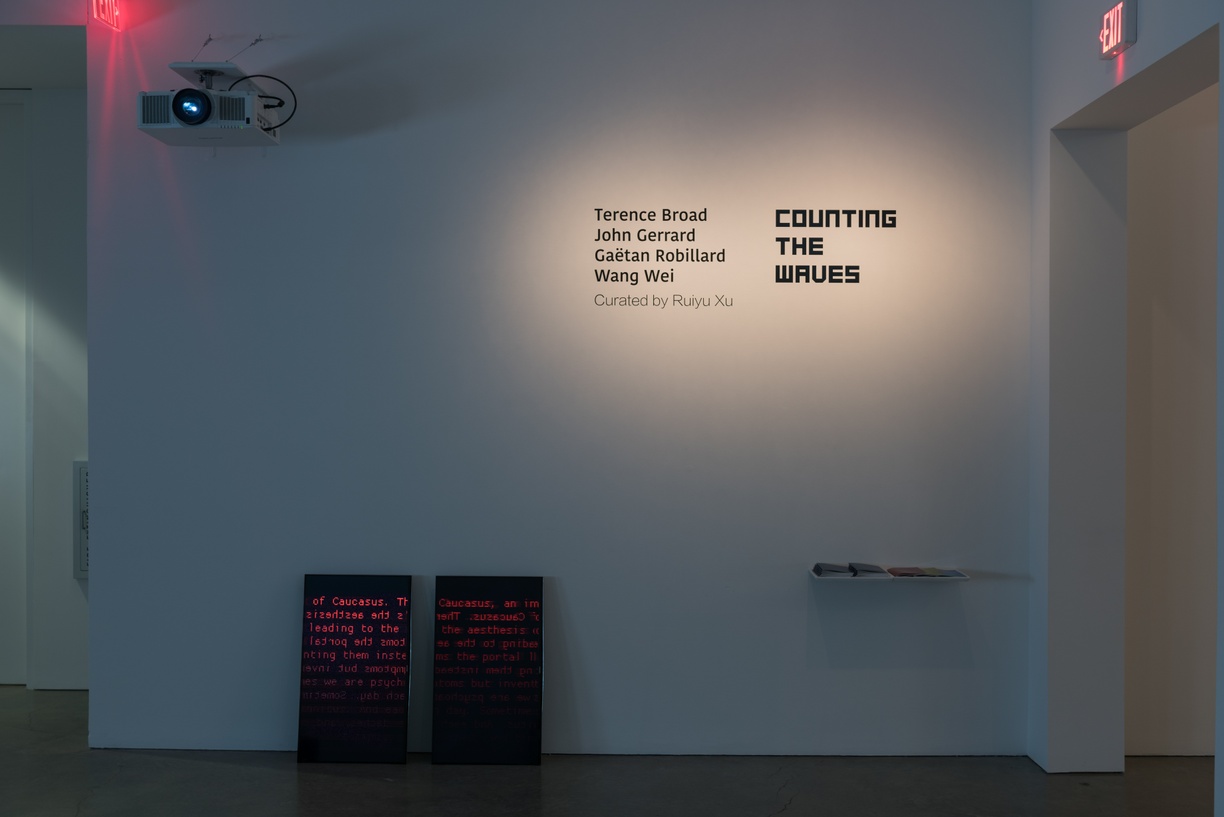
- Ruiyu Xu
Counting the Waves intends to map the overwhelming aspects of reality: that which appears as the inconsumable and inaccessible “sublime.” Through an investigation of digital prostheses, the exhibition provides political and historical grounding for the quantum-physical, metaphysical, cinematic and digital fashioning and re-fashioning of temporality.
John Gerrard’s Exercise (Dunhuang), 2014, displays simulated avatars of computer manufacturing plant workers looped into CGI survival games in which the “game board” is a mysterious military site located in the Gobi desert of China. The work presents three virtual viewpoints that, together, evoke the omnipresence of surveillance. Gaëtan Robillard’s En Recherchant La Vague is inspired by the story of Henri Charriere, a writer who allegedly escaped imprisonment numerous times, most notoriously from a penal colony called Devil’s Island in Guiana, by familiarizing himself with the movement of the waves through basic counting techniques. En Recherchant La Vague, featured here as a large-scale projection, depicts the surroundings of Devil’s Island through an algorithmic lens: the floor of the ocean is a gridded plane, and the waves are pixelated. Terence Broad’s Blade Runner—Autoencoded, 2016 delineates memory as a landscape. A movie-watching AI’s “memory” of Blade Runner—a film about AI—is presented as a blurry, wavy sequence of images with diffusion of light and dissolved color. Wang Wei’s text Re-Promethean, commissioned for the exhibition, unfolds over time and conjures up intricate relations that gather around the figure of Prometheus. In seven distinctively formatted chapters, which employ various literary forms such as speech, dialogue, monologue, and verse, the text engages with a set of enduring historical questions that have been framed by the concept of the “sublime”. Selected fragments from the text are presented in the space, scrolling in and out of two monitors in a juxtaposition of readable text and its digital gibberish-like mirror image that results from the coding process.



